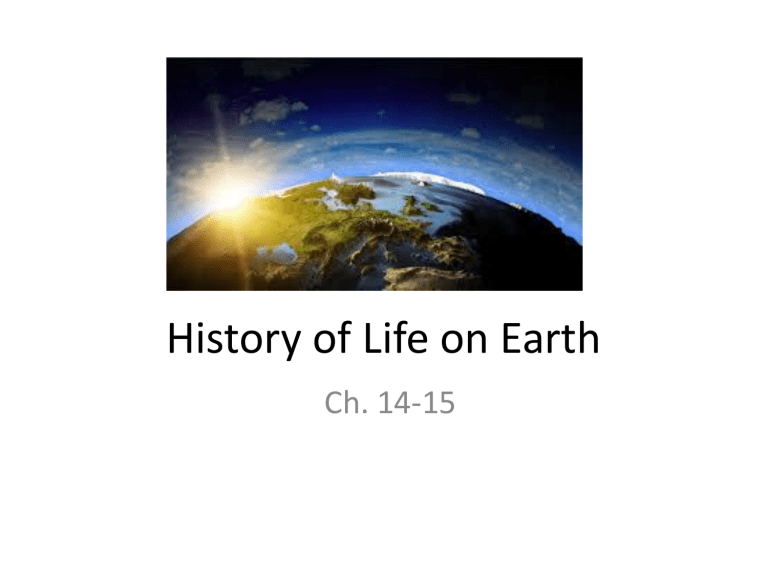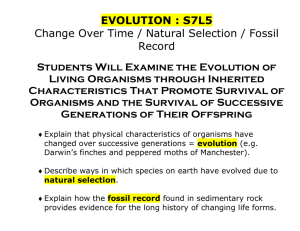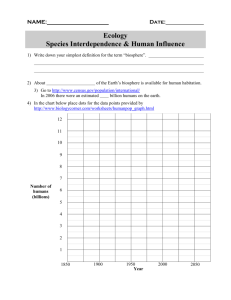History of Life on Earth

History of Life on Earth
Ch. 14-15
Preview: Earth in 5 ½ minutes
https://www.youtube.com/watch?v=8qnnoePe
Hlk
I. Earth is 4.5 billion years old
A. The first evidence of life are prokaryotes, about 3.6 billion years ago.
Fossil cyanobacteria Modern cyanobacteria
B. There is evidence that all life evolved from these single cells.
1. Law of Superposition-
Older fossils are in lower (deeper) stratum layers. This is used to determine
relative age (this fossil is older than that fossil).
2. Radiometric dating-
Determined by using the measure of the amounts of radioactive isotopes present in a fossil or rock. This determines
absolute age (age in years).
II. Evidence for evolution
A. Organisms change through time by means of natural selection. This idea was proposed by
Charles Darwin after years of research.
A. Organisms change through time by means of natural selection. This idea was proposed by Charles Darwin after years of research.
1. Natural selectionindividuals in a population always vary- some have better adaptations for survival than others.
Those that compete the best for food, shelter and mates will be the ones that survive and will pass on these genes to offspring.
1. Natural selection- individuals in a population always vary- some have better
adaptations for survival than others. Those that compete the best for food, shelter and mates will be the ones that survive and will pass on these genes to offspring.
2. Organisms do not purposefully choose acquire the traits they need, rather the environment “selects” those that will increase in the population (based on reproductive success).
2. Organisms do not purposefully choose acquire the traits they need, rather the environment “selects” those that will increase in the population (based on reproductive success).
3. Adaptation-an inherited trait that gives an organism an advantage for survival and reproduction.
3. Adaptation-an inherited trait that gives an organism an advantage for survival and reproduction.
a.
Camouflage- organism blends in to survive
b. Mimicry- one species resembles another- like pretending to be poisonous.
III. Other Evidence for Evolution
A. Homologous Structures- structures that are very similar in form indicate that organisms share a common ancestor.
Ex: Forelimbs of whales, crocodiles and birds all grow from the same structures in embryos (p. 401).
Ex: Forelimbs of whales, crocodiles and birds all grow from the same structures in embryos (p. 401).
B. Analogous Structures-structures that are the same in function, but do not derive from the same embryonic structure.
Ex. Butterfly and bird wings.
B. Analogous Structures-structures that are the same in function, but do not derive from the same embryonic structure. Ex: Butterfly and bat wings.
C. Embryological Similarities- the more alike early embryo structures, the more related the organisms are. (p. 402).
C. Embryological Similarities- the more alike early embryo structures, the more related the organisms are. (p. 402).
D. Biochemistry- the more similar the genes in DNA are, the more closely the organisms are related to each other.






